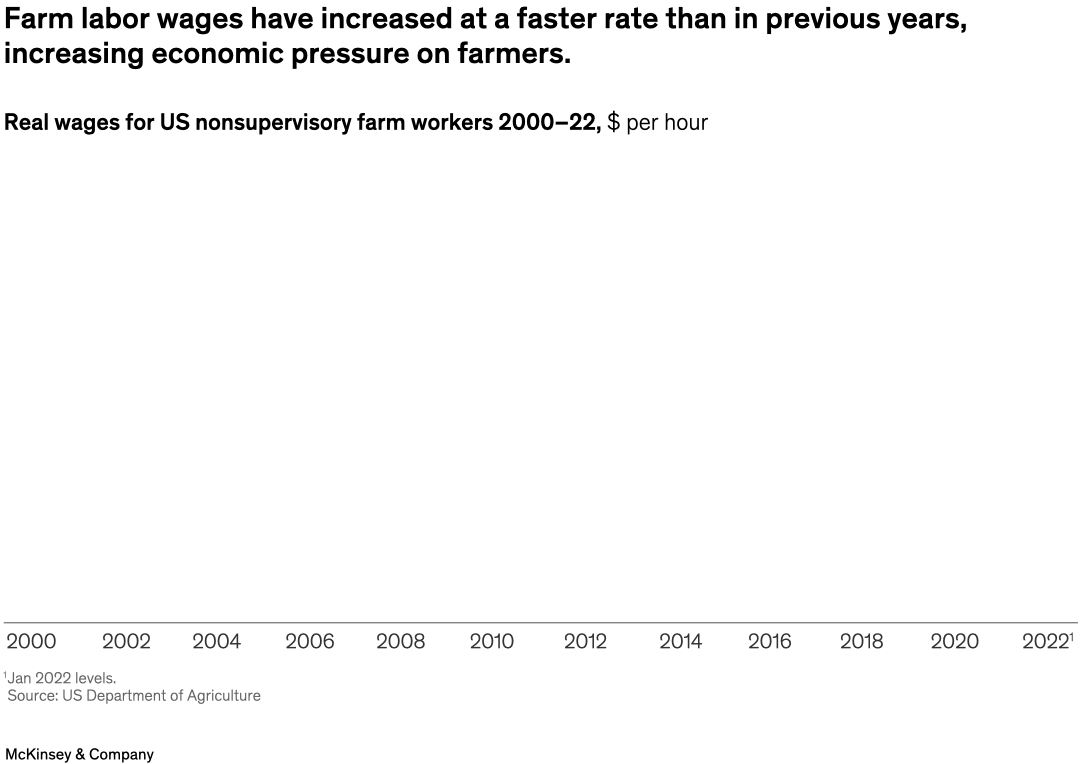Farmers worldwide are feeling a financial squeeze, as significant cost increases for labor and resources put their profitability at risk. In the United States, wages rose 4 percent a year from 2015 to 2022, after gains of less than 1 percent for almost 15 years. Senior partner Rob Bland and colleagues note that innovative solutions such as automation can help to improve working conditions on farms, lower the operating skills required for workers, and decrease farms’ labor costs.

Image description:
A bar graph displays the progression of real hourly wages for nonsupervisory farm workers in the US, spanning the years 2000–22. The average hourly wage in 2000 was $11.90. A slight yearly increase of about 0.5% occurred over the following 15 years, bringing the average wage to $13.40 by 2015. From 2015–22, wages rose at a faster pace of about 4% per year, reaching an average of $17.60 per hour. The year 2022 stands out for its significant wage boost.
Footnote 1: The wage information for 2022 is based on Jan 2022 data.
Source: US Department of Agriculture.
End of image description.
To read the article, see “Trends driving automation on the farm,” May 31, 2023.